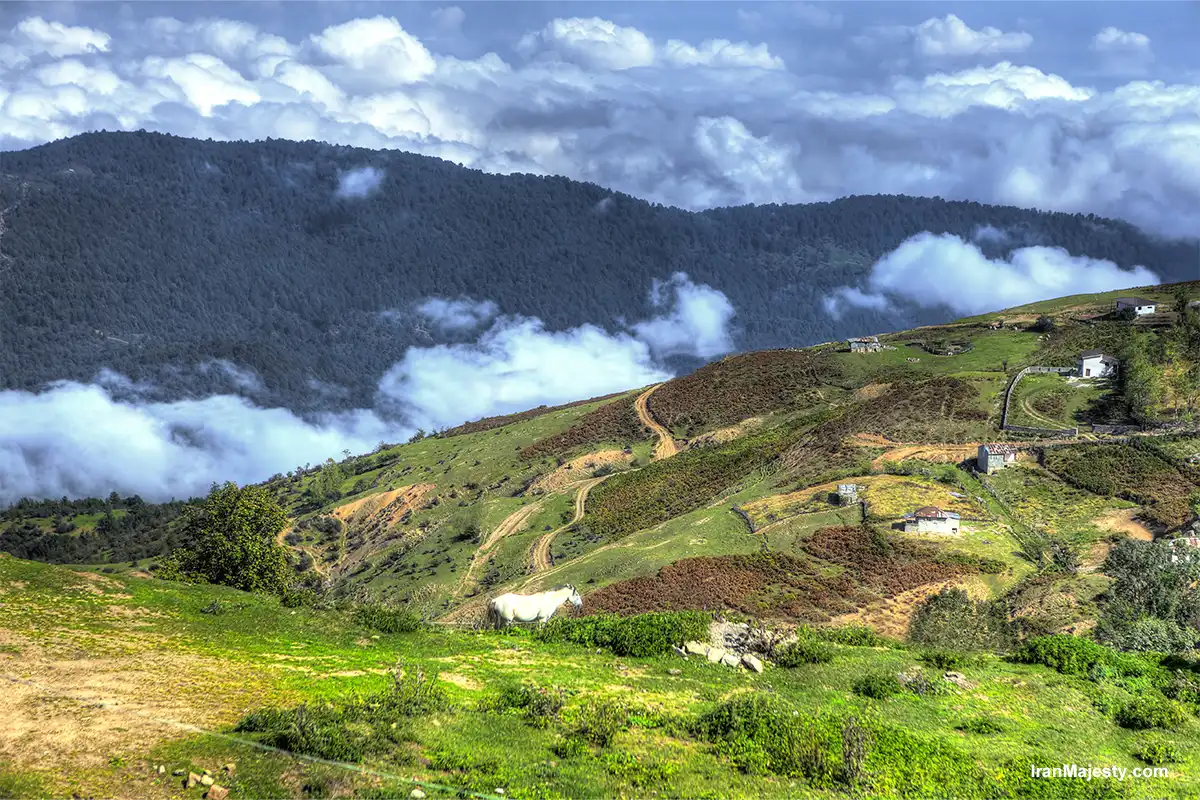Iran is an incredible destination for eco-tourism, offering diverse landscapes, rich ecosystems, and countless outdoor activities for travelers seeking to immerse themselves in nature. With its unique mix of deserts, mountains, forests, and coastlines, Iran is an ideal location for those who love exploring the natural world. In recent years, Iran has begun promoting eco-friendly travel, emphasizing the importance of preserving its pristine environments while showcasing the beauty of its natural attractions.
Why Eco-Tourism in Iran?
Eco-tourism in Iran offers a chance to explore untouched regions, support local communities, and help conserve Iran’s precious ecosystems. With a wide range of habitats and protected areas, travelers can enjoy both adventure and relaxation. Eco-tourism helps promote sustainable travel practices, encourages environmental protection, and ensures that local economies benefit from tourism without overexploiting resources.
Top Eco-Tourism Destinations in Iran
a) Hyrcanian Forests
Stretching along the southern coast of the Caspian Sea, the Hyrcanian Forests are among the world’s oldest, dating back over 25 million years. They are now a UNESCO World Heritage Site due to their biodiversity and unique flora. Visitors can hike through dense forests, explore waterfalls, and enjoy the cool, lush atmosphere—a refreshing contrast to Iran’s arid regions. These ancient forests are home to many rare species, including the Persian leopard, and are perfect for ecotourists who enjoy birdwatching, photography, and quiet nature walks.
b) Dasht-e Kavir and Dasht-e Lut Deserts
Iran’s vast deserts, such as Dasht-e Kavir (the Great Salt Desert) and Dasht-e Lut (a UNESCO World Heritage Site), are famous for their stunning landscapes, including salt flats, sand dunes, and unique geological formations. The Lut Desert is one of the hottest places on Earth, with unusual landforms shaped by centuries of wind erosion. Desert eco-tours often include stargazing, desert trekking, and camping under the stars. This area is especially appealing to adventure travelers and photographers.
c) Qeshm Island and the Hara Mangrove Forests
Qeshm Island in the Persian Gulf is known for its distinctive landscapes and diverse ecosystems. The Hara Mangrove Forests are a unique marine ecosystem with a rich variety of bird species, making it an ideal destination for birdwatchers and ecologists. Visitors can take a boat through the mangroves, watch for native and migratory birds, and experience the tranquility of this unique ecosystem. The island also has attractions like the Valley of Stars, a surreal landscape that’s ideal for photographers and nature lovers.
d) Golestan National Park
Golestan National Park is Iran’s oldest national park and one of the most biodiverse regions in the country. Located in northeastern Iran, this UNESCO Biosphere Reserve features forests, grasslands, and mountainous regions. It is home to various species such as the Persian leopard, wild boar, and rare bird species. Nature enthusiasts can enjoy hiking, wildlife observation, and guided eco-tours through the park. The park’s diverse habitats make it a fascinating destination for ecotourism.
e) Alamut Valley
Nestled within the Alborz Mountains, Alamut Valley is known for its breathtaking scenery and historical significance. Visitors to Alamut Valley can explore Alamut Castle, once a stronghold of the Ismaili Assassins, while enjoying the picturesque landscapes of valleys, rivers, and mountain ranges. Hiking and nature photography are popular activities here, offering travelers a blend of natural beauty and historical exploration.
f) Kish Island’s Coral Reefs
Kish Island, located in the Persian Gulf, is a popular spot for beachgoers and underwater adventurers. The coral reefs surrounding the island are rich in marine life, making it a fantastic destination for snorkeling and diving. Efforts to preserve the coral reefs encourage responsible tourism practices, allowing visitors to enjoy the marine beauty without harming the delicate ecosystems.
Eco-Tourism Activities in Iran
Iran’s diverse landscapes offer a range of eco-friendly activities that cater to different interests:
- Hiking and Trekking: From the high peaks of Mount Damavand to the valleys of Alborz, Iran has some of the most scenic hiking trails. These areas are perfect for eco-conscious travelers who want to experience Iran’s landscapes up close.
- Birdwatching: Iran’s wetlands, forests, and mangroves are home to numerous bird species. The Hara Mangroves and Anzali Lagoon are particularly popular for birdwatchers, offering opportunities to spot both native and migratory birds.
- Stargazing in the Desert: The clear skies of Iran’s deserts, particularly Dasht-e Kavir, make it an exceptional location for stargazing. Travelers can camp in the desert and witness some of the clearest night skies, free from urban light pollution.
- Wildlife Photography: Iran’s national parks and protected areas are home to unique wildlife, including the Persian leopard, Asiatic cheetah, and various bird species. Golestan National Park and the Hyrcanian Forests provide excellent spots for wildlife photography.
- Marine Activities: Iran’s coastlines, particularly on Qeshm and Kish islands, offer snorkeling and diving opportunities. These activities promote an appreciation of Iran’s marine biodiversity and the importance of conservation.
Sustainable Tourism and Eco-Friendly Travel in Iran
Eco-tourism in Iran focuses on respecting nature, preserving habitats, and involving local communities. Here are a few ways eco-tourists can contribute to sustainable tourism in Iran:
- Support Local Communities: Many eco-tourism spots in Iran are near small villages. By choosing local accommodations, dining at local restaurants, and buying crafts from local artisans, travelers can help these communities thrive.
- Respect Wildlife and Habitats: Travelers are encouraged to observe wildlife from a safe distance and avoid disturbing natural habitats. Responsible eco-tourists avoid littering and help maintain the beauty of these sites for future visitors.
- Travel in Small Groups: Smaller tour groups have a lower impact on the environment and are easier to manage. Many eco-tourism operators in Iran prioritize small-group travel to minimize ecological footprints.
“For a deeper perspective on Iran’s Eco-Tourism: Opportunities for Nature Lovers and Adventurers, here’s an excellent video from Erfun saeidi. It’s included here for added context and appreciation of the creator’s expertise.”

Why Choose Iran for Eco-Tourism?
Iran’s eco-tourism is an enriching experience, offering both adventure and peace in nature. From the lush Hyrcanian forests to the serene deserts of Lut, Iran provides travelers with a rare chance to explore unspoiled landscapes and diverse ecosystems. For those who want to experience the world’s natural beauty and ancient cultural heritage, Iran’s eco-tourism opportunities make it an unforgettable destination.
If you’re looking to travel in a way that respects nature and supports local communities, Iran’s eco-tourism offers the perfect opportunity. The country’s diverse landscapes and commitment to conservation make it a destination well worth exploring.
Have any thoughts or questions about eco-tourism in Iran? Feel free to leave a comment below, and don’t forget to share this article with friends who love nature and adventure!


0 Comments